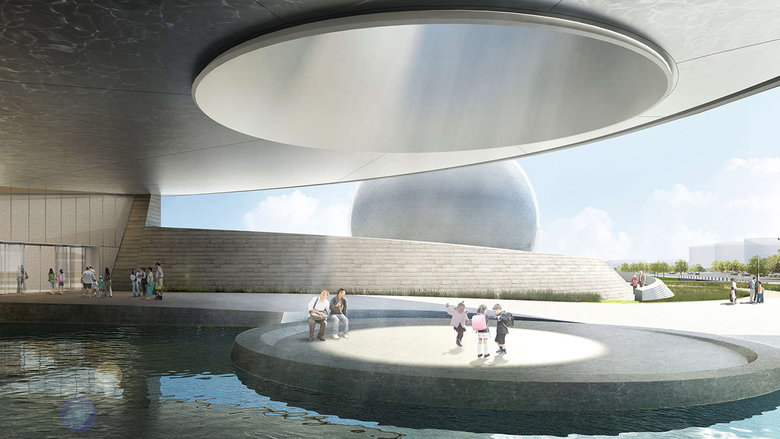Ennead Wins Shanghai Planetarium Competition
John Hill
5. March 2015
Aerial view (Image: Courtesy of Ennead Architects)
Ennead Architects won the commission for the Shanghai Planetarium branch of the Shanghai Science and Technology Museum (SSTM) with a design inspired by the astronomic principle of orbital motion.
The 38,000 m2 (409,000 sf) museum, designed by Ennead Architects partner Thomas Wong, is comprised of three main "celestial bodies": the Oculus, the Inverted Dome and the Sphere. The Oculus marks the entrance and acts as a sundial, tracing the sun's movement across a reflecting pool; the Inverted Dome ends the spiraling sequence of the galleries, offering views of the sky through a glass ceiling; and the Sphere houses the theater while acting as a wayfinding device and symbol for the museum. This last piece recalls Ennead's much beloved design of the Rose Center for Earth and Space at the Museum of Natural History in New York; there a sphere is housed in a glass cube with walkways and heavenly bodies hovering in the in-between space.
In a statement, Ennead describes the SSTM design as a celebration of the continuum of time and space: "it is a link to the past, mirroring both the rich history of Chinese astronomy and the future ambitions of China’s space exploration program." The museum consists of permanent exhibit galleries, temporary exhibit galleries, a 21-meter-diameter Digital Sky Theater, an 18-meter-diameter Optical Planetarium, IMAX theater, Education and Research Center, Solar Telescope, Youth Observation Camp, and Observatory. The museum will be a significant part of Lingang New City, a district southeast of Shanghai's CBD that was master planned by gmp · Architekten von Gerkan, Marg und Partner.



